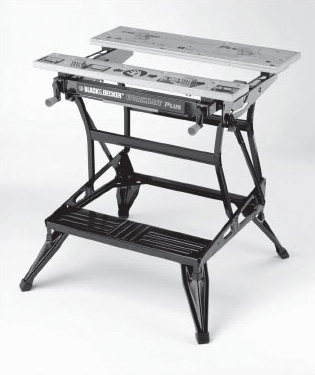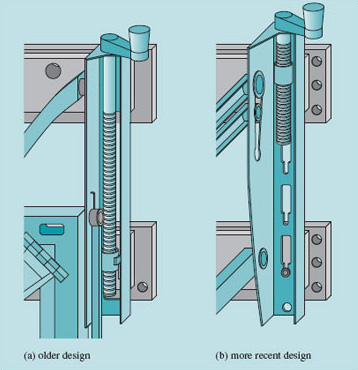1.3 Innovation by development
Innovation by development is about changing the bit that doesn't work, or that could work better, to improve the function of the whole for reasons of cost, performance, ease of manufacture or competitive edge. You probably noticed in Box 1 'Innovation by context – an example' that Baylis had to incorporate a number of developmental innovations as well. Improvements in materials or production equipment or techniques can present solutions to manufacturing difficulties, and so development becomes incremental not only in a product, but in a chain of production.
It's where the big money lies for companies wanting to keep one step ahead of their competitors without the (in general) higher risks and longer timescales of innovation – 'our powder washes brighter', 'this battery lasts longer' or 'this car is quieter to drive'.
Most technological items in everyday use have been subject to innovation by development. You can see the results in the motor industry, in aeroplanes, trains, mobile phones, computers, fridges, cookers, plastics, household implements … it's more difficult to think of something that hasn't been subject to innovation by development! Box 2 Innovation by development – an example explores a typical product development.
Box 2 Innovation by development – an example
The Black & Decker Workmate portable workbench (Figure 3) has been the DIY and professional craftsman's best friend for thirty years now. At first sight, it is a product that has not changed much at all in that time; but if you look more closely, you will see that it has undergone a considerable amount of innovation by development. However, this has been done over such a long period of time that you need to put the original next to a new one to spot the differences. We can look at some of these changes and try to guess why they were made.

The original Workmate had a pair of long leadscrews (Figure 4a), one on each side, to move the jaws of the vice-cum-work surface. The length of these screws was over 30 cm, and they moved the half of the table furthest from the user relative to the other half, which was static. This enabled the bench to offer one of its best selling points: the ability of the vice to accept a large range of workpieces, including wedge-shaped and very wide ones.

The current design has switched things around, so that it is now the part of the top nearest the user that moves, but the leadscrews are very much shorter and therefore lighter (Figure 4b). This would normally restrict the range of widths of workpiece that can be accepted, but this has been restored by making the other part of the top removable. To accept pieces with a width that is outside the range of the leadscrews, this part of the top is simply unlocked from the framework and moved into one of the alternative locations for it, providing a new range of jaw separations that overlap slightly with the previous position.
Exercise 1
Make a list of the effects of the change to the design of the Workmate's vice mechanism, noting the beneficial and detrimental effects for each one from the manufacturer's and the user's point of view.
Why do you think this change has been introduced?
Answer
Cost saving on leadscrews:
better margin for manufacturer, lower price for user.
Reduction in weight:
reduced distribution cost for manufacturer, easier to carry for user.
Screw does not now pass under the opening of the vice:
no direct effect for manufacturer, reduced likelihood of clogging with sawing debris (and therefore excessive friction) for user.
Extra operation of removing and replacing the moving jaw required for changes in workpiece width that exceed the leadscrew travel:
no direct effect for manufacturer, less convenient for user for small changes in workpiece width that nevertheless require relocation of the moving jaw, though quicker to change jaw separation for large changes in workpiece width.
The effects on both the user and manufacturer of all but the first change are slight. Therefore, the likely reason for the change is the first one – cost saving. This is partly offset by a cost to the manufacturer in making the change – the cost of the design work, changes to drawings, parts lists and order schedules. Note that the cost reduction has a beneficial effect for both the user and the manufacturer.
